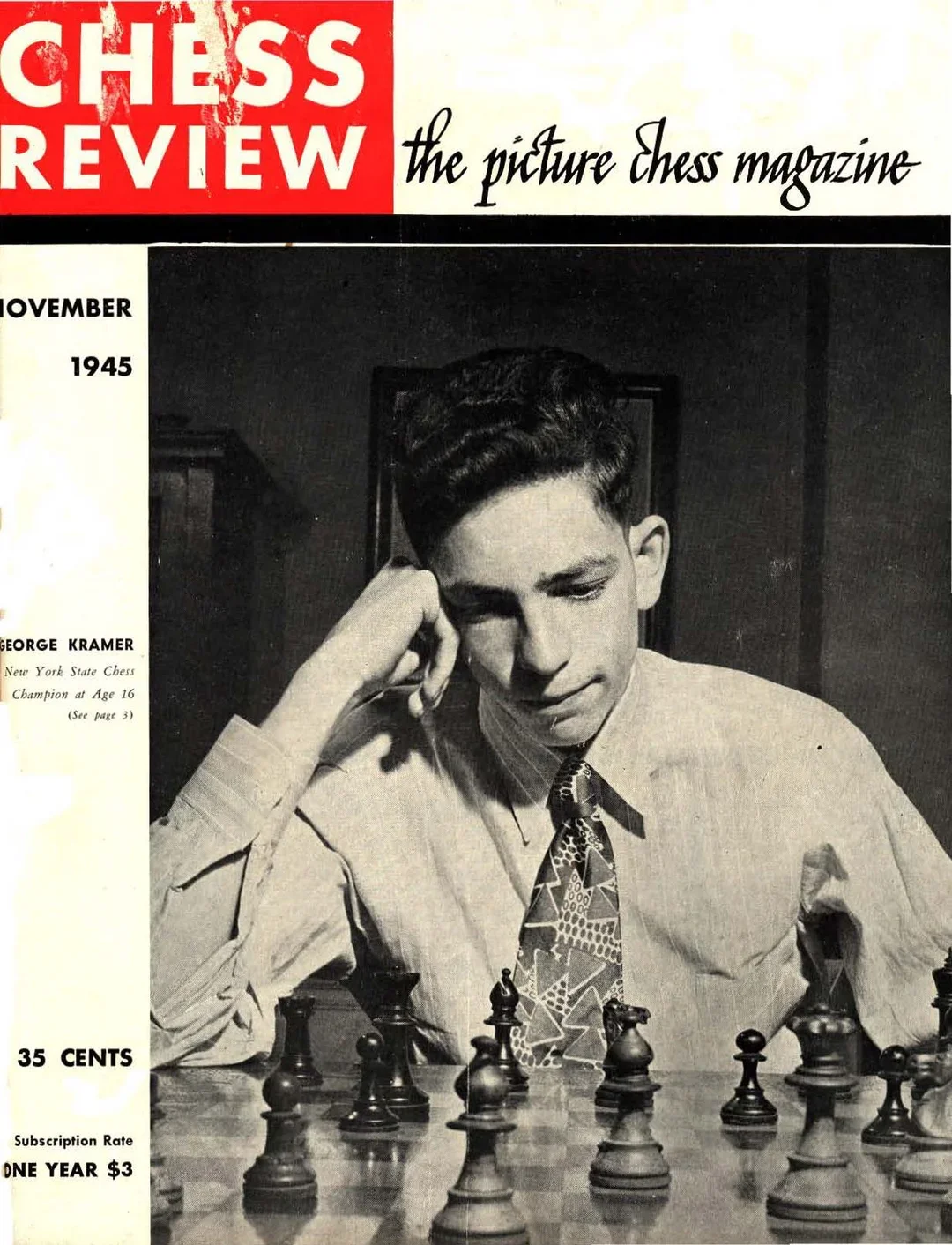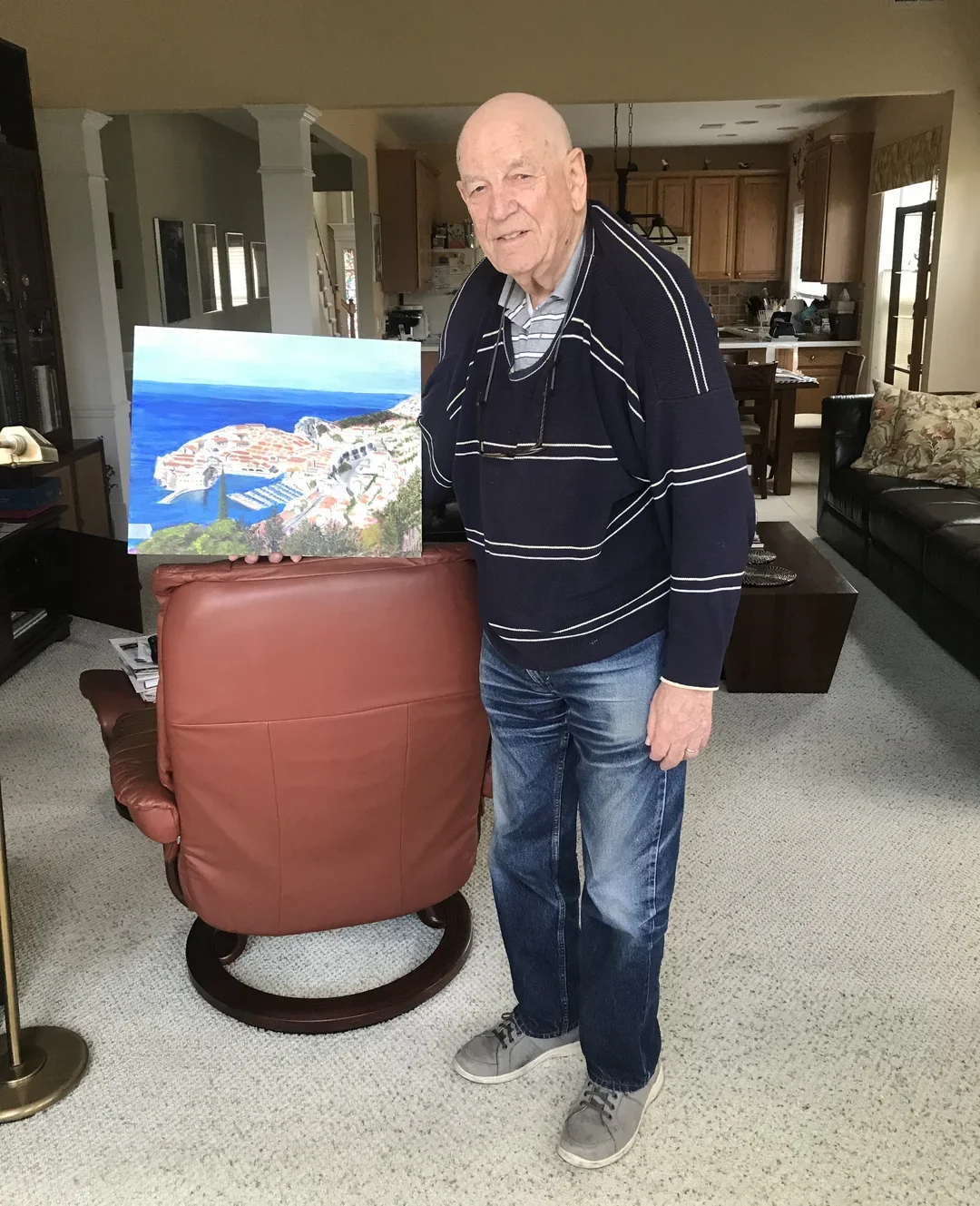Born May 15, 1929 in Brooklyn, New York, George Mortimer Kramer began playing chess and competing at a young age. By 1945, he had won the New York State Chess Championship. In 1950, he traveled to Dubrovnik in the Socialist Federal Republic of Yugoslavia as a member of the US Olympiad team, earning bronze for his individual performance on the reserve board. The team finished fourth out of 16 competing federations, only a half-point behind third-place West Germany.
The following year, Kramer received a Bachelor of Science from Queen’s College, City University of New York, and acquired both a Master of Science and Doctorate of Philosophy in chemistry from the University of Pennsylvania in 1955 and 1957, respectively. Before his graduate studies, Kramer married Vivian Kaplan and served for three years in the US Army.

After acquiring his doctorate, Dr. Kramer became a renowned chemist and senior research associate with Exxonmobil Research, acquiring over 20 patents while publishing over 50 scholarly articles. He was also a recipient of the Albert Nelson Marquis Lifetime Achievement Award for his contributions to both chemistry and chess. A timeline of professional milestones courtesy of Marquis Who’s Who can be found here.
Throughout his career, Dr. Kramer continued competing as a chess player. He ranked as high as fourth in the country as of July 31, 1952. Around this time, he also contributed regularly to Chess Life magazine as an annotator. Dr. Kramer also competed in two U.S. Championships (1957, 1962).
The Kramer Variation of the King’s Indian Defense (ECO code E70) is indeed named after Dr. Kramer. The variation begins 1. d4 Nf6 2. c4 g6 3. Nc3 Bg7 4. e4 d6 5. Nge2, and was first employed by Dr. Kramer in 1946 in a victory over IM I.A. Horowitz. He also held GM Miguel Najdorf to a draw in this line in the Wertheim Memorial, also in New York, in 1951. The games are displayed below.
The variation is still seen at the top level today, and has been employed by GMs Carlsen, Caruana, and (on several occasions) Aronian. It is also a precursor to the Makogonov Variation (with 5. h3 and a later Ng1-e2) that remains one of the most theoretically challenging responses to the King’s Indian Defense today.
After finishing his graduate education, he won the New Jersey State championship three times (1964, 1967, 1969), as well as the Manhattan Club Championship (1951-52, 1973, 1974). He earned the title of Senior Master from US Chess before eventually announcing a decision to retire from competition in 1994. He still continued to play national events sporadically until the year 2000, including several US Open championships and US Amateur Team championships, as documented on his tournament history page. His last official rating was 2299.

In 2022, Dr. Kramer received an Outstanding Player Achievement Award from US Chess. As quoted in the 2023 Annual Report: “I was surprised and delighted to receive your letter about my receiving a 2022 Outstanding Player Achievement Award from US Chess. Most of my adventures in chess began when I lost a game to Kupchik in an intraclub match between the Queens and Manhattan Chess Clubs before I entered high school. Subsequently I played for Brooklyn Tech and soon joined Robert and Donald Byrne in interscholastic matches with schools like the Bronx High School of Science, whose team featured Bisguier and Shipman. In the late 1940s the Tech team was rated as containing three of the top five players in the country.”
More of Dr. Kramer's highlights can be seen in this week's Wednesday Workout.
Categories
Archives
- January 2026 (10)
- December 2025 (27)
- November 2025 (29)
- October 2025 (39)
- September 2025 (27)
- August 2025 (29)
- July 2025 (43)
- June 2025 (25)
- May 2025 (24)
- April 2025 (29)
- March 2025 (29)
- February 2025 (20)
- January 2025 (24)
- December 2024 (34)
- November 2024 (18)
- October 2024 (35)
- September 2024 (23)
- August 2024 (27)
- July 2024 (44)
- June 2024 (27)
- May 2024 (31)
- April 2024 (51)
- March 2024 (34)
- February 2024 (25)
- January 2024 (26)
- December 2023 (29)
- November 2023 (26)
- October 2023 (37)
- September 2023 (27)
- August 2023 (37)
- July 2023 (47)
- June 2023 (33)
- May 2023 (37)
- April 2023 (45)
- March 2023 (37)
- February 2023 (28)
- January 2023 (31)
- December 2022 (23)
- November 2022 (32)
- October 2022 (31)
- September 2022 (19)
- August 2022 (39)
- July 2022 (32)
- June 2022 (35)
- May 2022 (21)
- April 2022 (31)
- March 2022 (33)
- February 2022 (21)
- January 2022 (27)
- December 2021 (36)
- November 2021 (34)
- October 2021 (25)
- September 2021 (25)
- August 2021 (41)
- July 2021 (36)
- June 2021 (29)
- May 2021 (29)
- April 2021 (31)
- March 2021 (33)
- February 2021 (28)
- January 2021 (29)
- December 2020 (38)
- November 2020 (40)
- October 2020 (41)
- September 2020 (35)
- August 2020 (38)
- July 2020 (36)
- June 2020 (46)
- May 2020 (42)
- April 2020 (37)
- March 2020 (60)
- February 2020 (38)
- January 2020 (45)
- December 2019 (34)
- November 2019 (35)
- October 2019 (42)
- September 2019 (45)
- August 2019 (56)
- July 2019 (44)
- June 2019 (35)
- May 2019 (40)
- April 2019 (48)
- March 2019 (61)
- February 2019 (39)
- January 2019 (30)
- December 2018 (29)
- November 2018 (51)
- October 2018 (45)
- September 2018 (29)
- August 2018 (49)
- July 2018 (35)
- June 2018 (31)
- May 2018 (39)
- April 2018 (31)
- March 2018 (26)
- February 2018 (33)
- January 2018 (30)
- December 2017 (26)
- November 2017 (24)
- October 2017 (30)
- September 2017 (30)
- August 2017 (31)
- July 2017 (28)
- June 2017 (32)
- May 2017 (26)
- April 2017 (37)
- March 2017 (28)
- February 2017 (30)
- January 2017 (27)
- December 2016 (29)
- November 2016 (24)
- October 2016 (32)
- September 2016 (31)
- August 2016 (27)
- July 2016 (24)
- June 2016 (26)
- May 2016 (19)
- April 2016 (30)
- March 2016 (36)
- February 2016 (28)
- January 2016 (32)
- December 2015 (26)
- November 2015 (23)
- October 2015 (16)
- September 2015 (28)
- August 2015 (28)
- July 2015 (6)
- June 2015 (1)
- May 2015 (2)
- April 2015 (1)
- February 2015 (3)
- January 2015 (1)
- December 2014 (1)
- July 2010 (1)
- October 1991 (1)
- August 1989 (1)
- January 1988 (1)
- December 1983 (1)







